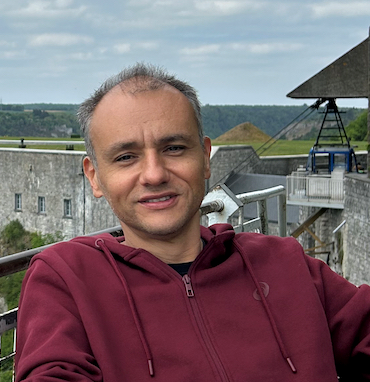Gareth H. McKinley FRS

Cássio Machiaveli Oishi
August 8, 2025New Techniques for Time-Resolved Rheometry of Complex Fluids:
Applications of Gabor Transforms and Optimally-Windowed Exponential Chirps
Hatsopoulos Microfluids Laboratory – Dept. of Mechanical Engineering, M.I.T. – Cambridge, MA 02139, USA
There has been a resurgence of interest over the past decade in complex aging and time-dependent fluidswhich exhibit a wide range of rheologically challenging phenomena including thixotropy, elastoplastic creep below yield and also age-dependent yield stresses. We illustrate how modern broad-band rheometric techniques can be used to help distinguish the distinct contributions to what may be referred to broadly as mutating materials with rheological properties that are typically both time– and rate–dependent. The relative importance of these effects can be quantified by three distinct dimensionless parameters; a mutation number, a Weissenberg number and a Mnemosyne number [1] that quantifies the importance of thixotropic effects in a fluid. The typical rheologist’s approach of using Fourier transforms for analyzing oscillatory data implicitly assumes the signals are time-translation invariant, which constrains the mutation number of a sample to be extremely small. This constraint makes it difficult to quantify shear-induced rheological changes in thixotropic and aging materials. In this lecture we will show how frequency-modulated techniques such as the optimally-windowed chirps (OWCh) and amplitude-modulated techniques such as the Gabor transform (a Short Time Fourier Transform (STFT) that utilizes a Gaussian window) can be used to provide optimal time-frequency resolution of the local viscoelastic properties of mutating materials. By slowly ramping the amplitude of the driving deformation we can also systematically explore transitions to nonlinear elasticity and ultimately to yielding and flow of the sample. Finally, we also illustrate how parallel superposition flows can be combined with Gaborheometry to arrest aging of colloidal systems and simultaneously monitor the temporal evolution in the viscoelastic response. By varying the relative strengths of the steady shearing component that “shear-melts” the microstructure and the superimposed oscillatory probe we show how one can unambiguously distinguish time-dependent thixotropic aging from local viscoelastic responses.
[1] Jamali, S., McKinley G.H. The Mnemosyne Number and the Rheology of Remembrance, J. Rheol. (2022), 66, 1027; https://doi.org/10.1122/8.0000432
[2] Rathinaraj J.D.J., McKinley, G.H. Gaborheometry: Applications of the discrete Gabor Transform for Time-resolved Oscillatory Rheometry, J. Rheol. (2023) 67, 479-497 https://doi.org/10.1122/8.0000549



